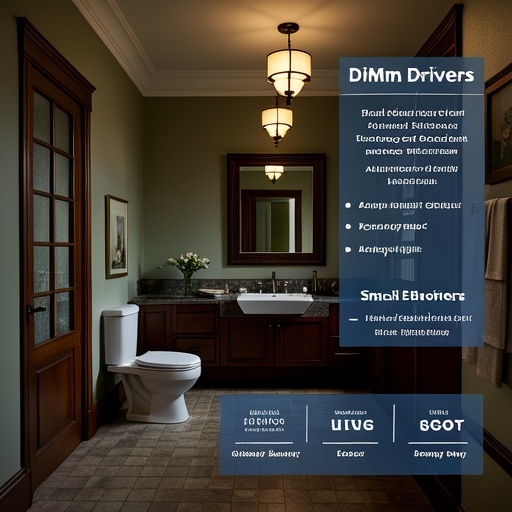From Halogen to DALI: Exploring the Evolution of Dimmable Drivers
In the ever-evolving landscape of lighting technology, the transition from traditional halogen systems to advanced DALI (Digital Addressable Lighting Interface) solutions marks a significant leap forward. This article delves into the fascinating journey of dimmable drivers, shedding light on their transformation, advantages, and the profound impact they have on energy efficiency and smart lighting design.
The Halogen Era: A Glimpse into the Past
Halogen lighting, once a staple in both residential and commercial settings, offered a warm, inviting glow with the added benefit of dimmability. These incandescent lamps worked by passing an electric current through a tungsten filament, which would heat up and emit light. While effective, halogen bulbs were notorious for their high energy consumption and short lifespan compared to modern alternatives. Dimmable drivers for halogen systems, though reliable, were limited in their ability to optimize energy use efficiently.
The Dawn of DALI: A New Era in Lighting Control
Enter DALI, a protocol specifically designed for sophisticated control of lighting systems. Unlike traditional dimming methods that often relied on analog signals, DALI introduced digital communication, enabling precise control over individual fixtures or groups within a network. This digital approach not only enhanced user experience but also paved the way for significant energy savings and increased flexibility in lighting design.
The Evolution of Dimmable Drivers
As technology progressed, so did the capabilities of dimmable drivers. Modern drivers designed for DALI systems are far more efficient, converting electrical power into light with minimal loss. They support a wider range of dimming levels, allowing for smooth transitions from full brightness to complete darkness, creating the perfect ambiance for any setting. Moreover, these drivers are compatible with LED technology, further amplifying energy efficiency and longevity.
Benefits Galore: Why DALI Matters
1. Energy Efficiency: DALI's precise control reduces unnecessary power consumption, making it an eco-friendly choice. It enables fine-tuning of light levels, ensuring that no energy is wasted.

2. Enhanced User Experience: With DALI, users can create personalized lighting scenes, schedules, and automation routines, enhancing comfort and convenience.
3. Scalability and Flexibility: Whether it's a small office or a large commercial space, DALI systems can be easily expanded and customized to meet specific needs.
4. Longevity and Low Maintenance: Compatible with LEDs, DALI systems significantly reduce maintenance costs due to longer lifespans of the lighting components.
Smart Lighting Integration
The integration of DALI with smart home and building automation systems has opened up a world of possibilities. From remote control via smartphones to voice commands with AI assistants, the future of lighting is undoubtedly smart and interconnected. DALI's compatibility with various communication protocols ensures seamless integration, making it a future-proof investment.
Conclusion: Illuminating the Path Forward
The evolution from halogen to DALI dimmable drivers represents a monumental shift towards sustainable, efficient, and intelligent lighting solutions. As technology continues to advance, we can expect even greater innovations in lighting control, further enhancing our environments while reducing our carbon footprint. Embracing DALI is not just about upgrading lighting systems; it's a commitment to a brighter, more sustainable future.
 In heritage architecture prote
In heritage architecture prote
 When small-batch customization
When small-batch customization
 Have the electromagnetic emiss
Have the electromagnetic emiss
 When Triac dimmable power supp
When Triac dimmable power supp
